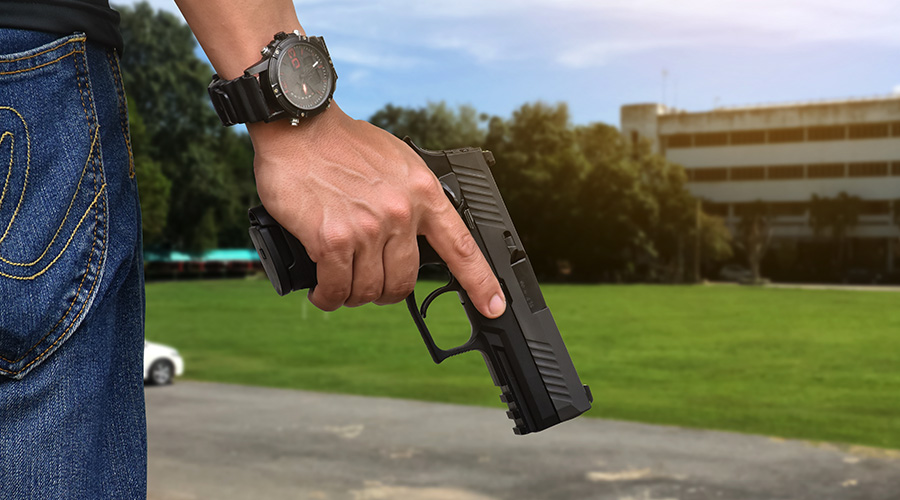Security
In the face of varied threats, a zoned approach can protect the facility from the inside out.
In the past, unauthorized entry was the biggest threat to building security. As the tragic events of and following Sept. 11, 2001, have made all too clear, threats to security have become more varied and sophisticated. In developing a security program today, facility executives must also consider the threats of bombs and biological and chemical weapons.
That is why it is more important than ever to develop a comprehensive security program to protect building users, business continuity and real estate assets. As part of this process, it is essential to look not only at the hardware and software comprising the building’s security system but also to identify and assess the roles of all human and electronic security assets, including integrated electronic security systems, building automation systems, contract security personnel and public agencies.
The results of this assessment will allow facility executives to design and implement security measures in concentric zones, from the interior of the building outward to the public domain.
Zone 1: The Interior
Every facility executive needs to protect interior space from unauthorized entry. The means available include:
- An effective system at the front desk or lobby to identify and badge employees and visitors
- Locking systems
- Intrusion detection and 24-hour alarm monitoring
- Closed-circuit television (CCTV) in key locations
- Security guards
Zone 2: The Perimeter
The typical multitenant building perimeter base building system focuses on elements that are incorporated into the design of a new structure, but also may be retrofitted. Some of these elements are:
- Window coatings to minimize glass shards; polycarbonate glass from grade to 30 feet or higher
- Structurally hardened building exteriors
- Defensive landscaping — avoiding landscaping that conceals intruders or provides natural “ladders”
- Lighting and CCTV in key areas
- Control of loading dock traffic
- Control of building entrances — main lobby and elevator core interface with public
Mail facilities are also vulnerable to biological and chemical weapons, and unauthorized entry. To combat those threats, consider:
- Limiting access to authorized personnel
- Placing barriers at the building perimeter to decrease access and reduce the impact of hazards
- Installing X-ray package-screening equipment
- Installing nuclear, biological and chemical (NBC) detection equipment
- Installing negative pressurization systems to contain hazardous materials
- Using HVAC filtering and treatment, such as HEPA filters and UV treatment
Finally, the building’s air systems and mechanical room, if located on the perimeter, are another area of vulnerability. Protect air handling systems from tampering by:
- Fencing off fresh-air intakes and return-air vents or moving them to roof
- Securing mechanical room exits
Zone 3: Building Grounds
Building grounds should be treated as a defensive zone to prevent cars and trucks, which might be carrying explosives, from crashing into the building. One security measure against these threats is the installation of highway barriers, but these are unsightly. Instead, use landscape elements to create a stand-off zone around the building, remembering that the effect of blasts diminishes with the distance from the blast. Effective methods include:
- Using mature trees, landscaped earth berms, raised planter beds, benches, ornamental fencing and ornamental light posts
- Incorporating effective lighting
Zone 4: Property Boundary
Implement security measures at the property line, which may include:
- Roadway and barrier systems, such as a guardhouse
- Communication systems in remote parking lots, such as emergency intercom and CCTV surveillance
- Secured access to gas, water, electric, telephone service and utilities, such as locking manhole covers
Zone 5: Parking Structures
Parking structures are a significant area of vulnerability. Limit and monitor access and use, particularly if the parking structure is within or under the main part of the building. In addition to eliminating on-street curb parking, successful methods might include using:
- Parking control system
- Vehicle identification system
- License plate recognition system
Zone 6: Public Domain
Finally, leverage the assets that are available to property owners in the public domain: streets, police, fire and emergency services departments. Coordinate security policies and procedures with public agencies at the local, state and federal levels, as appropriate. Establish a liaison to obtain real-time intelligence about actual and potential threats.
In today’s world, facility executives must take a holistic approach to security planning, programming and system design. They must assess the full range of security assets available — both human and electronic — and develop a system that protects the property at every zone from the interior to the public domain.
Related Topics:











